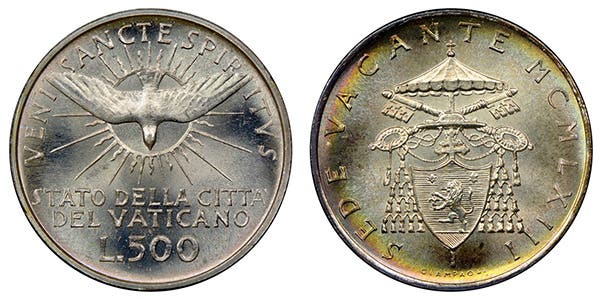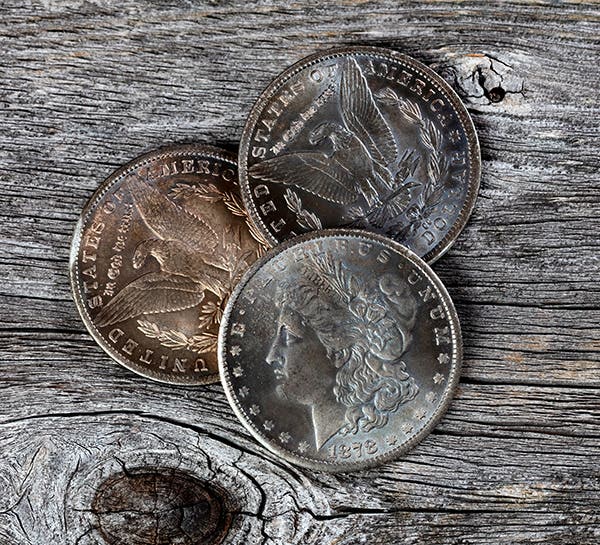2024-P Dr. Mary Edwards Walker Doubled Die 25c Found at Walmart
A major Doubled Die Reverse discovery on the 2024-P Dr. Mary Edwards Walker quarter is turning heads. Found in circulation and already making waves online, this stunning variety showcases significant doubling on the Medal of Honor and Walker’s hair—don’t miss your chance to check your change!
As we enter the new year, I thought it might be interesting to take a look at a fairly major Doubled Die Reverse reported on a 2024-P Dr. Mary Edwards Walker American Women quarter. Axer Enrique Cotto of Puerto Rico reported this to me a few weeks ago; the variety has been making a big splash on eBay in recent weeks.
It features strong hub doubling (doubled die) of many of the design elements on the Medal of Honor on the upper right side of the design and on Walker’s hair (on the right side of the portrait). The doubling of the Medal of Honor shows strongly on the muzzle of the canon to the right and on the right hanger on the inverted five-pointed star that dangles below. Nice doubling is also evident along the outline of the right side of the star.
While Concepción was the first to show me an example, one from Dominick Montagna was submitted to doubled-die attributer Dr. James Wiles of VarietyVista a couple of weeks earlier. Wiles has it listed in his files as 2024-P 25c MW VDDR-001. His VV’s images and more detailed information on the coin can be seen here.
It has also been listed in my Variety Coin Register files for inclusion in the 6th edition of Strike It Rich With Pocket Change.
The first centralized doubled die discovered on a United States commemorative quarter since the inception of the State Quarter Series was reported by me in Numismatic News in early 2006 on a 2005-P Minnesota State quarter discovered by Troy Watkins. The doubling on his quarter and the multitude of other doubled-die commemorative quarters discovered since have been determined to be the result of a hub and die being tilted in relation to each other during the earlier stages of creating the die (as detailed below).
Since that story (on the MN doubled die) hit the front page of Numismatic News in early 2006, collectors have been examining the central regions of all of the U.S. quarter designs unabated now for almost 20 years. The result has been a long string of literal thousands of mostly very minor and a few major doubled dies being discovered all over the Washington Quarter commemoratives. In fact, the “single squeeze” hubbing process that the Mint touted as the end of all doubled dies backfired and just increased the numbers being produced by at least five-fold.
The United States Mint replaced the multiple hubbing process in recent years with the more modern “single squeeze” restrained hubbing process. The “single squeeze” process produces doubled dies that are, more often than not, restricted to the central areas of the design versus the older classic doubled dies exhibiting their strongest doubling on elements about the rim such as on IN GOD WE TRUST, the date and LIBERTY on a 1955 Doubled Die cent.
The face of a die blank is machined with a slightly conical configuration to aid in the flow of metal during hubbing. This would indicate that the initial kiss of a hub into a die blank would be restricted to this centralized area before continuing to fill out the rest of the design. During this process, the tip of a tilted die blank would be positioned slightly off location away from the center of the hub into a different area of design than intended. After the initial contact, the pressure of the hub eventually seats the die blank into the proper position and, in turn, causes doubling on the affected die.
Another possible cause I have been citing since 1996 is that it could also be the result of a hub/die blank being seated cockeyed and caught just before the end of the squeeze, the press stopped, backed off, and the tooling reseated properly to finish it out the die. Multiple hubbings of this sort on single-squeeze presses were confirmed as occurring by the Mint after tests were conducted to see how the massive 2009-D District of Columbia Doubled Die Revere occurred. According to Wexler, the Mint also interviewed hubbing press operators who confirmed that they were, in fact, stopping the presses to do a physical on-hand reset of the tooling, which, in effect, means that some of the doubled dies created on the single-squeeze hubbing presses were actually the result of deliberate multiple hubbings, with the first hubbing being what in the old days many of us called a “limited pressure hubbing.” That would include coins like the 1984 Doubled Ear, the 1955-D Doubled Eye, and 19 of-date Lincoln cents.
Because this new Walker American Women Series quarter doubled die exhibits a shift of the underlying images from the center over toward the right side of the coin design, specialists tend to agree that this doubled die is the probable result of both a tilted and offset hub doubled die or what I coined a hybrid form of doubled die back in the 1990s.
To date, the only other of the post-1998 commemorative quarter doubled dies that display a pronounced shift as far off to one side of the coin as on the Walker DDR are the Oregon State Quarter doubled dies I featured in NN in July 2008. This seems to suggest the tooling in the Mint’s hubbing operations may be getting a bit worn, allowing for wider shifts during mishaps in hubbing. More detailed information on my theory of worn tooling and its contributions to wider spreads and limited pressure hubbings can be found in my May 27, 2017, Numismatic News article.
So how much are they worth? In the past, I have always indicated that we can only guess, but in the end, value is determined by supply and demand. That is still true, but in this case, I need to stress that over the years, we have learned that almost all the more significant post-1998 quarter doubled dies start at prices well above where they land a few months to a few years later when searching online auctions such as eBay. At the time of this writing, the actual selling prices of ungraded examples of the new Walker DDR have sold on eBay in the last two weeks at prices ranging from around $75 to as high as $205. Where will they be two weeks or two months from now? My guess is it will follow the usual trend of starting high and then settling downwards. This is based primarily on how prices have been trending on all the post-98 doubled dies except one.
While this is a very nice doubled-die, I suggest waiting at least a month or two to see where prices settle. There are enough of these on eBay right now for us to be sure this will not be another great rarity like the 2009-D Washington D.C. Duke Ellington Doubled Die quarter that fetches thousands of dollars.
To the contrary, the 2005-P Minnesota Doubled Die Reverse #1 “Extra Tree” quarter was selling for around $150 before it was even attributed as a doubled die, being sold by Watkins as simply “Extra Tree.” The variety did not turn out to be a great rarity, and the die may have seen a full run. Today, that variety can be purchased for $19.50 on eBay from a seller who has already sold 13 of them and has seven left to sell, which, BTW, is a great price for a nice centralized doubled die.
While on the subject of doubled dies from the American Women Quarter Series, we should probably look back to 2022 when two pretty decent centralized doubled dies were produced for the 2022-P Maya Angelou Quarters. In both cases, the doubling is quite dramatic in Angelou’s earring. The first one shown here is listed in the Wexler Die Variety Files as WDDR-001 and is my favorite of the pair. It is also listed in VarietyVista as VDDR-001 and by me as VCR#1/DDR#1.
The second doubled die listed also has a doubled earring, perhaps a bit wider in spread than DDR#1 but less in strength of doubling. This one is listed as WDDR-002, VDDR-003 and VCR#2/DDR#2. Both varieties will appear in the next edition of Strike It Rich and, I would guess, may be candidates for inclusion in a future edition of Cherrypickers’ Guide to Rare Die Varieties by Bill Fivaz and J.T. Stanton.
More info on these can be found in the Wexler Files.
There have been very few commemoratives in comparison to the other series of post-98 quarter commemoratives, and it will be interesting to see what 2025 brings. Contact Numismatic News to let us know what you find.
Ken Potter has been a feature writer for Numismatic News since the early 2000s and is a past World Coin News columnist from the 1990s. He is co-author with Dr. Brian Allen of Strike It Rich With Pocket Change, now in its 5th edition. He is a member of the board of the Combined Organization of Numismatic Error Collectors of America (CONECA) and may be contacted for more information on the club at kpotter256@aol.com.
You may also like:








